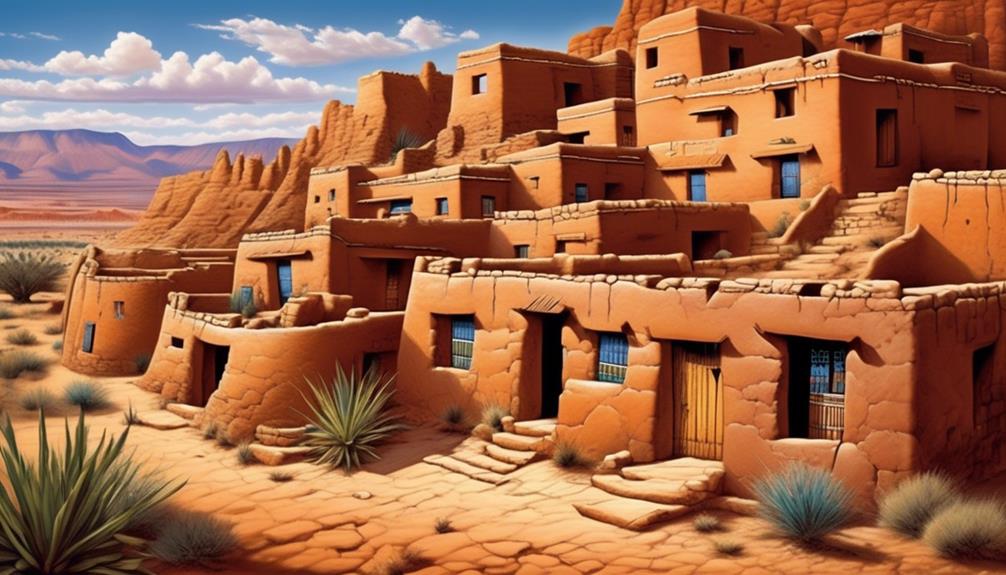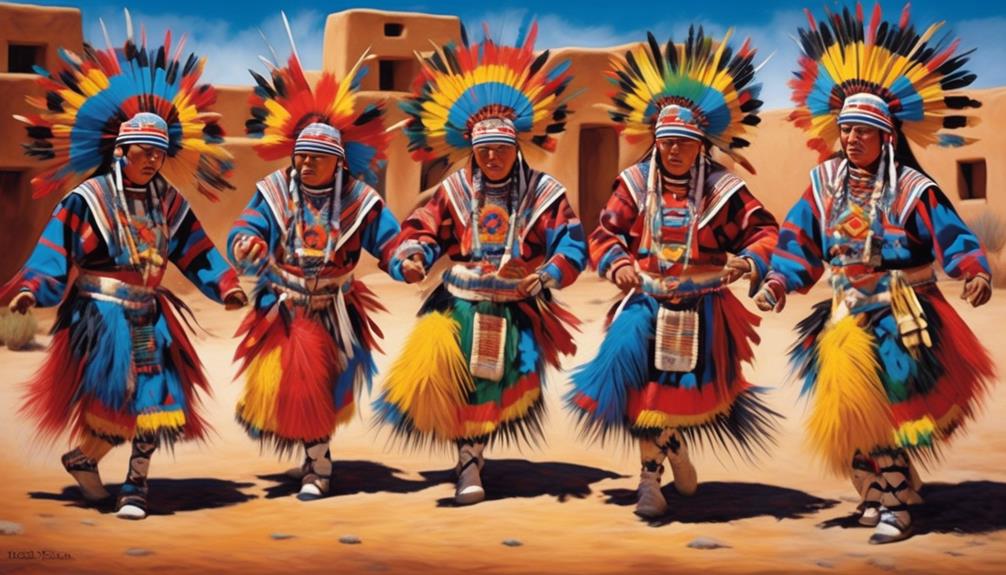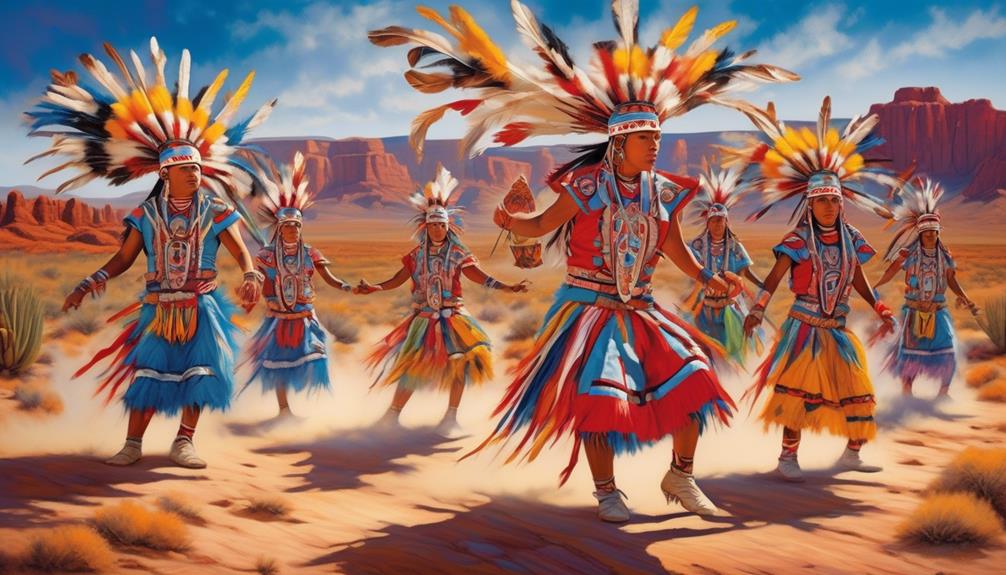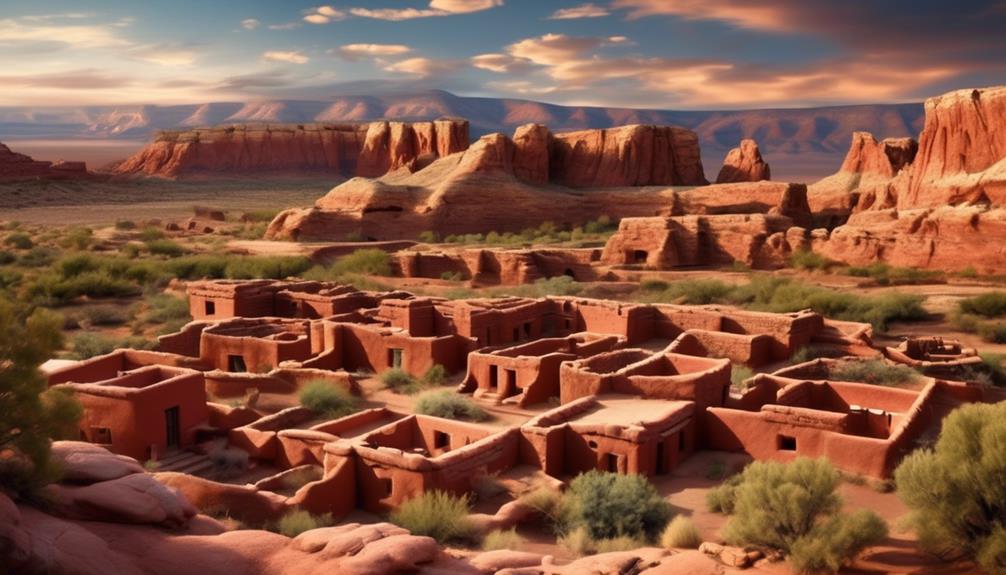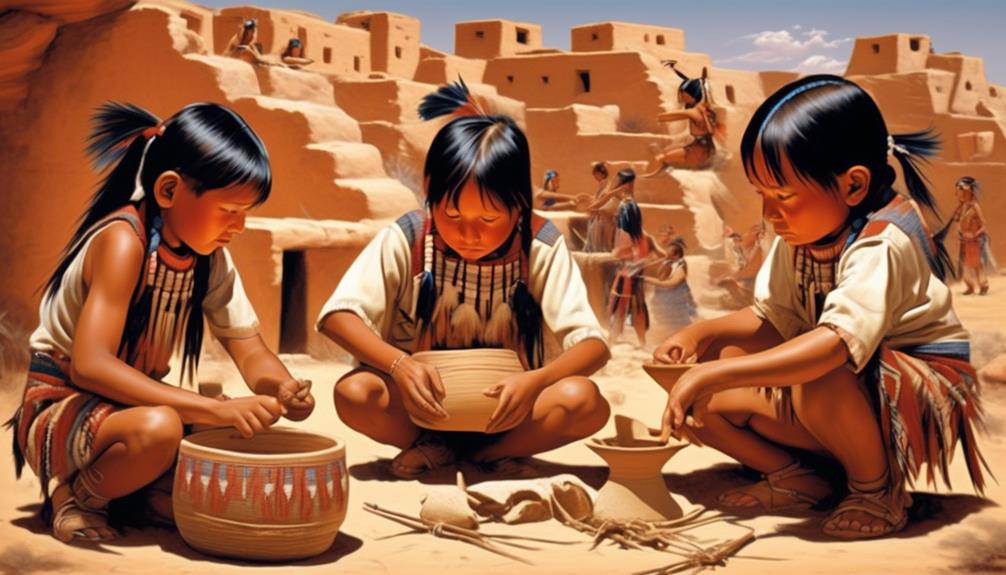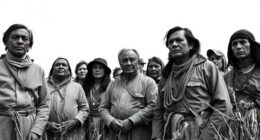The Hopi Tribe, known for their rich cultural heritage and revered traditions, welcomes us to explore their enigmatic essence.
From their ancient origins to their contemporary presence, the Hopi people have persevered through centuries, holding steadfast to their beliefs and customs.
But who are they really? What are the core tenets of their spiritual beliefs, and how have they shaped their art and craftsmanship?
Join us as we unravel the mysteries and complexities of the Hopi Tribe, delving into their history, traditions, and enduring legacy.
Key Takeaways
- The Hopi Tribe has a long history of migration and settlement in the American Southwest, spanning over a thousand years.
- They have demonstrated impressive levels of organization and community planning in their ancient villages.
- The Hopi Tribe has had significant interactions and influences with neighboring tribes, contributing to the rich tapestry of art and craftsmanship.
- They have a strong emphasis on cultural preservation, including thriving agricultural practices, ceremonial traditions, and a reverence for the earth and its resources.
Origins and History
How did the Hopi Tribe come to be and what's their historical journey?
The Hopi Tribe's origins and history are deeply rooted in their migration patterns and settlement in the American Southwest. The Hopi people have lived in the same area for over a thousand years, and their unique way of life reflects a long history of interactions with other Native American tribes and influences from various cultures.
The Hopi Tribe's migration patterns led them to settle in the remote mesas of northeastern Arizona, where they established a thriving agricultural society. Their ancient villages, known for their stone and adobe structures, demonstrate the impressive level of organization and community planning that the Hopi people possessed.
Influences and interactions with neighboring tribes, such as the Navajo and Zuni, have shaped the Hopi's cultural traditions and religious practices. These interactions have also contributed to the rich tapestry of art and craftsmanship for which the Hopi are renowned, including their intricate pottery and delicate jewelry.
Cultural Traditions

After settling in the remote mesas of northeastern Arizona, the Hopi Tribe has preserved their cultural traditions through interactions with neighboring tribes and a thriving agricultural society. Our ceremonial practices and storytelling have been passed down through generations, serving as a cornerstone of our identity and beliefs. These practices are deeply rooted in our spiritual connection to the land and our ancestors, shaping our worldview and guiding our actions.
Our agricultural methods, deeply intertwined with our societal structure, reflect our reverence for the earth and its resources. Through sustainable farming techniques and a communal approach to land stewardship, we've sustained our people for centuries. The cultivation of corn, beans, and squash holds profound cultural significance, representing the embodiment of our values and sustenance.
Furthermore, our societal structure, characterized by a strong sense of community and kinship, underpins our cultural traditions. Our interconnectedness is evident in our social ceremonies and daily interactions, fostering a collective responsibility for the well-being of all members. It's through these enduring cultural traditions that the Hopi Tribe continues to thrive and uphold our rich heritage.
Spiritual Beliefs
Deeply rooted in our cultural fabric, our spiritual beliefs guide our daily lives and shape our interconnectedness within the Hopi Tribe. Our spiritual practices are integral to maintaining harmony and balance within our community. We uphold shamanic practices that involve connecting with the spirit world to heal and gain insight. Ceremonial rituals, such as the Hopi Snake Dance, are central to our spiritual beliefs, serving as occasions to express gratitude, seek blessings, and foster unity. These rituals are passed down through generations, reinforcing our connection to our ancestors and the land.
To provide a glimpse into our spiritual practices, here is a table showcasing some of the key ceremonial rituals and their significance:
| Ceremonial Rituals | Significance |
|---|---|
| Hopi Snake Dance | Praying for rain and fertility |
| Powamu | Welcoming Katsinam spirits |
| Wuwuchim | Honoring ancestors |
Our spiritual beliefs are not just a part of our identity; they are the essence of our existence, guiding us in living in harmony with nature and each other.
Art and Craftsmanship
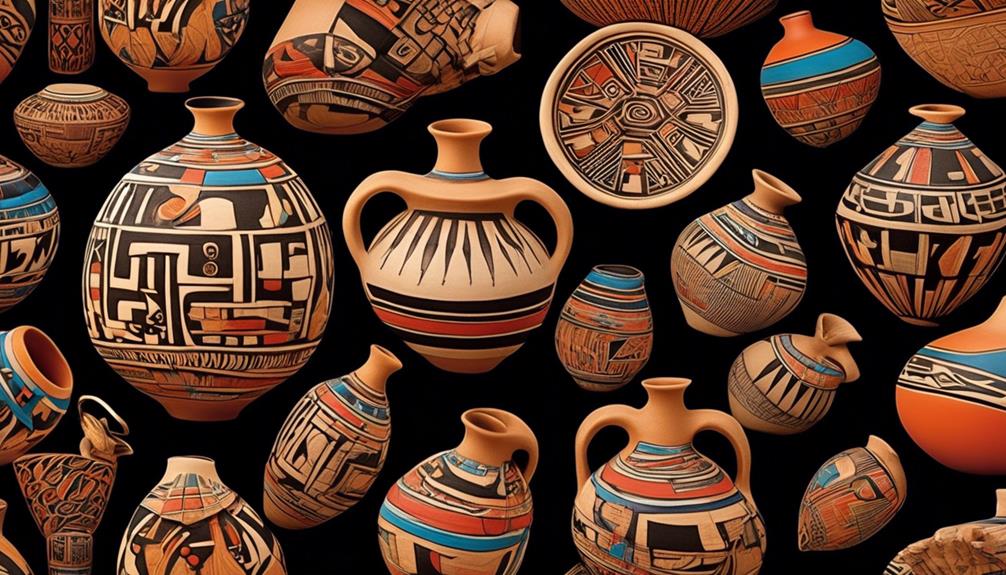
Embracing our spiritual connection to the natural world, our artistic traditions and craftsmanship are a testament to the enduring creativity and cultural significance within the Hopi Tribe. Our artisans skillfully employ traditional techniques passed down through generations, preserving our rich heritage and cultural identity. Symbolic imagery is intricately woven into every piece, conveying profound meanings and stories that have been cherished for centuries.
Our art and craftsmanship encompass a wide range of forms, each deeply rooted in our traditions and beliefs. This includes:
- Pottery: Our pottery is renowned for its intricate designs and vibrant colors, often featuring symbolic representations of elements from our spiritual beliefs, such as animals and plants.
- Katsina Dolls: Crafted with meticulous attention to detail, these dolls are carved and painted to depict various katsinam (spirit beings), serving as both decorative pieces and educational tools for teaching our cultural and spiritual knowledge.
- Textiles and Jewelry: Through weaving and beading, we create stunning textiles and jewelry adorned with symbolic patterns and motifs, reflecting our deep connection to the natural world and our spiritual symbolism.
Through these forms of artistic expression, we continue to honor our ancestors and preserve the essence of Hopi culture for future generations.
Contemporary Presence
In our contemporary presence, we actively engage with modern society while upholding our traditional values and cultural heritage. The modern influence has undoubtedly impacted our way of life, but we've managed to integrate it without compromising our identity. We embrace technology, education, and entrepreneurship while remaining deeply rooted in our indigenous customs and beliefs. Our community engagement reflects our commitment to preserving our traditions while adapting to the evolving world around us. We participate in various outreach programs, cultural exchanges, and collaborative projects to share our heritage with the broader society while learning from others.
Our contemporary presence also involves advocating for environmental conservation and sustainable practices. We recognize the importance of preserving our land and resources for future generations and actively work towards achieving this goal. Through initiatives like eco-tourism and renewable energy projects, we strive to balance modern needs with traditional ecological wisdom.
In navigating the complexities of modernity, our commitment to our cultural identity remains unwavering. We continue to find innovative ways to honor our heritage while embracing the opportunities and challenges of contemporary society.
Frequently Asked Questions
What Are Some Common Misconceptions About the Hopi Tribe?
Misconceptions about the Hopi Tribe often stem from stereotypes and lack of awareness. Cultural exchange and community relations are key in addressing these.
It's important to understand and respect their traditions, rather than relying on preconceived notions. Engaging in open dialogue and learning from the Hopi Tribe can help dispel misconceptions and foster mutual understanding.
How Does the Hopi Tribe Interact With Other Native American Tribes in the Region?
We interact with other Native American tribes in the region through inter-tribal relationships and cultural exchange. Our connections with neighboring tribes involve sharing traditions, knowledge, and ceremonies.
These interactions contribute to the preservation and enrichment of our cultural heritage. Through mutual respect and collaboration, we honor the unique identities of each tribe while finding common ground in our shared experiences and histories.
What Are Some Unique Challenges That the Hopi Tribe Faces in the Modern World?
Facing unique challenges, we, the Hopi Tribe, grapple with economic development hurdles and education challenges in the modern world.
These obstacles hinder our community's growth and prosperity. Our people strive to navigate these difficulties while preserving our cultural heritage and traditions.
Despite the adversities, we're resilient and remain dedicated to overcoming these challenges to build a better future for our tribe and generations to come.
How Does the Hopi Tribe Balance Traditional Practices With Modern Influences?
In balancing traditional practices with modern influences, we prioritize cultural preservation while embracing modern adaptation. Our tribe values traditional customs, integrating them into contemporary society. By respecting our heritage and adapting to the changing world, we honor our ancestors while thriving in the present.
This balance allows us to maintain our identity and traditions, while also participating in the modern world, creating a harmonious coexistence between our rich heritage and the contemporary world.
What Are Some Important Environmental and Conservation Issues That the Hopi Tribe Is Involved In?
We are deeply involved in environmental activism and conservation efforts.
Our tribe is committed to protecting the land, water, and natural resources that are essential to our way of life.
We work tirelessly to address issues such as water scarcity, land preservation, and sustainable energy practices.
Through our traditional knowledge and modern approaches, we strive to maintain a balance between honoring our heritage and safeguarding the environment for future generations.
Conclusion
In conclusion, the Hopi tribe is like a sturdy tree, deeply rooted in their traditions and spirituality. They have a rich history and cultural traditions that have shaped them into a resilient and enduring community.
Their vibrant art and craftsmanship reflect their reaching towards the sky, showcasing their rich heritage. The Hopi tribe stands tall, like an ancient beacon of wisdom and strength in a modern world.
